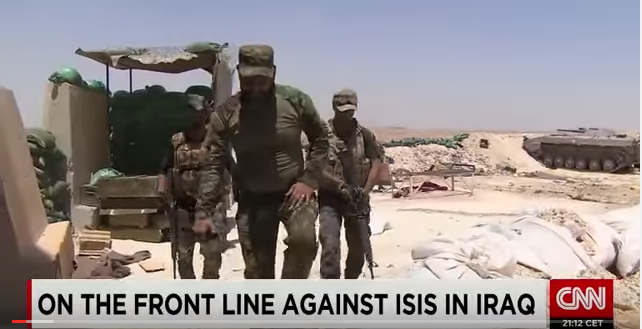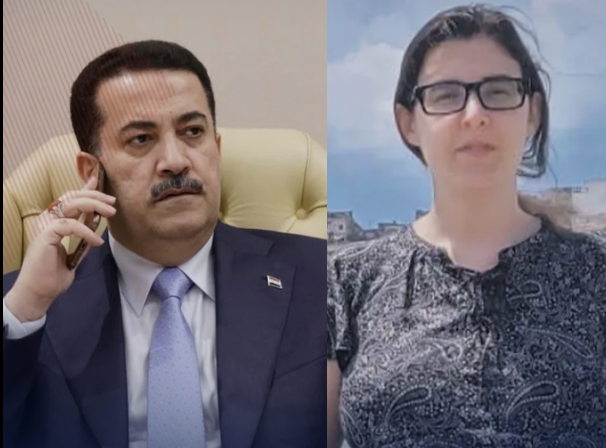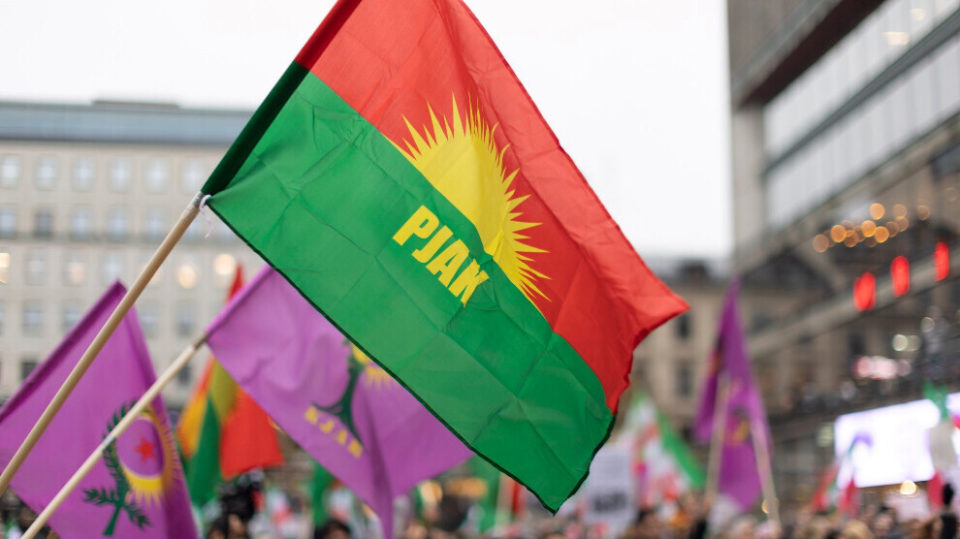
Iraq’s Shia Militias: Helping or Hindering the Fight Against Islamic State?
Iraq’s Shia Militias: Helping or Hindering the Fight Against Islamic State?
The rise of Islamic State in Iraq has contributed to the increasing prominence of Iraq’s Shia militias. However, while the militias are united in their desire to defeat IS, there are nonetheless clear divisions among them arising from narrow self-interest, differing ideologies and political loyalties, and Iranian interference. There is additional competition between some militias over aid and salaries (al-Monitor, September 8, 2015).
The al-Hashd al-Shaabi, or Popular Mobilization Forces (PMF), an umbrella group for majority Iraqi Shia militias, was established in June 2014 in response to the IS seizure of nearly one-third of Iraq. PMF forces successfully defended the Karbala and Najaf governorates in southern Iraq from the advance of IS forces. The PMF spearheaded the military campaign alongside the Iraqi Security Forces (ISF) in the Baghdad belt, Salah al-Din, and Diyala governorates. Compared to the less effective ISF, the PMF have been both active and eager in the fight against IS, due in part to their ideal of Shia jihad in a conflict between two rival religious doctrines.
In February, in a move to tighten control over the disparate groups that make up the PMF, Prime Minister Haider al-Abadi installed Muhsan al-Kaabi, a former senior Iraqi army officer, as his administrative deputy to the PMF. Al-Kaabi’s appointment was intended to limit the PMF deputy chairman, the pro-Iranian Abu Mahdi al-Muhandis (Iraqi News Network, March 3). Efforts at reform, however, have a long way to go.
Establishment of the PMF
The PMF was created on the order of Nouri al-Maliki, Iraq’s then-Prime Minister, in 2014 with the unanimous backing of the Council of Ministers. Recruitment was aided substantially by a historic fatwa from Grand Ayatollah Ali al-Sistani, the highest marja (“Source of Emulation”) of the Shias, which called on “all able-bodied Iraqis” to defend their country (Terrorism Monitor, April 17, 2015). The number of active PMF members is unclear, but unofficial estimates range from 80,000 to 120,000 (The World Weekly, February 26, 2015; al-Hashd al-Shaabi, August 3, 2015).
The group falls under the authority of the prime minister, as commander-in-chief of the armed forces and the defense ministry. Its supporters have been lobbying for the group to gain full legal status as part of the Iraqi Security Forces (ISF) (al-Mada, February 25). While the Iraqi Council of Representatives (ICR) has approved and allocated hundreds of millions of dollars to the PMF from the 2015 and 2016 budgets (Rudaw, January 6), however, debate continues among Iraqi officials over what its exact legal framework should be (al-Jazeera, March 10, 2015).
Categorizing the Militias
The militias can be divided into three major unofficial blocs, based on similar objectives rather than formal alliances, with a fourth constituting affiliated non-Shia militias that include Sunnis, Yazidis, Christians, and other minorities (Niqash, June 20, 2015; al-Bayan, July 7, 2015).
The first and most influential bloc is the pro-Iranian militias, established by the Iranian regime. Of these, the Badr Organization, headed by Hadi al-Amiri, is the largest and best equipped, manned by approximately 20,000 fighters (al-Jazeera, June 10, 2014). Others include Asaib Ahl al-Haq (AAH), Kataib Hezbollah (KH), Saraya al-Khorasani, and Harakat al-Nujaba, that follow the Iranian supreme leader’s doctrine, wilayat al-faqih, and have political aspirations.
They have also been the most effective against IS, with the Badr Organization dominating Diyala governorate (Hatha al-Youm, May 25, 2015). They have access to rockets, heavy weaponry, and intelligence both from the Iranian Revolutionary Guards Corps and the Iraqi government, as well as benefitting from the expertise of Iranian military advisors (Kitabat, March 5, 2015; Fars News Agency, July 17, 2015).
The second bloc are the pro-Sistani militias, the Hashd al-Sistani, made up of the Liwa Ali al-Akbar, Furqat Imam Ali al-Qitaliyah, and Furqat al-Abbas al-Qitaliyah (Shabakat Imam Ali, May 18, 2015; Imam Hussain, January 3, 2015; Imam Hussain, November 1, 2014; al-Kafeel, March 1). They are close to Prime Minister Abadi and have gradually increased to approximately 20,000 fighters, though they have the potential to reach 50,000 (al-Jazeera, June 10, 2014).
Their recruits are largely volunteers who signed up in response to Sistani’s fatwa and most have no political ambitions. They are backed by pro-Sistani institutions or Shrine Foundations such as Ataba Al-Abbasya, Ataba al-Alawyyia al-Muqadasa, and Ataba Al-Hussaniya al-Muqadasa (al-Sumaria, September 26, 2015; Wakalat al-Nnabaa, February 5). They are fewer in number than their pro-Iranian counterparts, but have the support of the Iraqi defense ministry and increasingly fall under the ISF’s command (al-Jazeera, February 26).
Furqat al-Abbas al-Qitaliyah and Liwa Ali al-Akbar have a relatively high percentage of Sunni fighters among their number; in Liwa Ali al-Akbar’s case, the number is as high as 16% (Middle East Eye, December 1, 2015).
The third bloc is made up of loyalists of Shia cleric Muqtada al-Sadr and militias supporting the Islamic Supreme Council of Iraq (ISCI), led by Ammar al-Hakim. These are two powerful Shia political factions with complex links to Iran. Despite their rivalries, they are categorized together due to their loose adherence to the federal government in Baghdad. Such pro-Hakim militias include Saraya Ansar al-Aqeeda, Liwa al-Muntathar and Saraya Ashura, while the main pro-al-Sadr militia is Saraya al-Salam (Saraiaalaqeda, March 1; al-Hurrya, March 14, 2015). The leaders of both factions have said their forces will follow the ISF’s instructions in the battle against IS (al-Hayat, March 30, 2015).
The Shia militias are disorganized and undisciplined, however, as well as prone to confrontation with each other and occasionally the Iraqi government. There were clashes between Saraya al-Salam and AAH in Baghdad in 2015 and in al-Muqdadia in 2016 (Sqqur al-Arab, February 6; Baghdad Center Human Rights, 2015), while Saraya al-Khorasani has clashed with police in Balad in Diyala (Baghdad Center Human Rights, April 3, 2015). AAH’s leader Qais Khazali denounced Iraq’s parliamentary political system, calling for a presidential system to be put in place instead (The New Arab, August 17, 2015). Khazali’s demands should be interpreted in light of his support of al-Maliki.
Further, when Operation Conquest “Fatah,” the preparatory Mosul operation intended to liberate the areas surrounding the city, was launched on March 24, it coincided with some of the PMF militias—notably those with strong ties to Iran and Shia cleric Muqtada al-Sadr—rejecting the U.S.-led anti-IS coalition in Iraq (Iraq Krama, March 18; al-Mustaqbal news, March 26).
Consequences for the Fight Against IS
The political divisions between the Shia militias have had significant consequences in regard to their effectiveness on the ground and their coordination with other anti-IS forces, particularly with the U.S.-led coalition.
When the Iraqi government operation in Tikrit launched on March 1, 2015, headed by Iran’s Qud’s Force Commander Qassem Soleimani, faced a stalemate, Abadi ordered the militias to pull back to pave the way for US air strikes. However, the pro-Iran militias who were leading the fighting refused, angry at U.S. involvement (Fars News Agency, March 11, 2015; al-Etejah TV, March 29, 2015). The pro-Iranian militias then announced their withdrawal from the battlefield, leaving the pro-Sistani and al-Sadr militias to back the ISF and continue the operation. This marked the first apparent split on the battlefield between the prime minister’s allies and the pro-Iranian militias (al-Araby al-Jadeed, March 28, 2015; al-Jazeera, March 30, 2015).
Then, once Tikrit was liberated on March 31, the pro-Iranian militias returned to carry out revenge attacks and have subsequently been accused of human rights violations (Human Rights Watch, September 20, 2015). Pro-Iranian militias in Amerili in Salah al-Din governorate and in Jurf al-Sakhaer (southwest of Baghdad) have faced similar accusations (Alalam, October 26, 2014; Herak, December 17, 2014).
Pro-Iranian militias were sidelined during the operation to free Ramadi, which fell to IS in May 2015, because the central government wanted to tread delicately in Sunni tribal areas. The city’s liberation in December that year represented a success for the ISF, particularly the counter terrorism forces of the elite al-Firqah al-Dhahabiya, or “Golden Division,” and hundreds of local Sunni tribes. But smaller groups of pro-Iranian militias tacitly infiltrated the Ramadi operation to avoid being marginalized in the operation (Sky News Arabia, September 23, 2015; Rudaw, December 29, 2015).
The buildup to operations in Mosul was beset by a heated political dispute over the PMF’s proposed involvement. While the PMF insisted on being part of the Mosul operation, many Iraqi Sunni politicians—among them a Sunni bloc in the ICR known as Tahaluf al-Quaa and council members from Ninewa province (of which Mosul is the capital)—refused to agree to it (Iraq Network, February 20).
Instead, the Sunnis supported the participation of Arab Sunni tribes (Hashd al-Watani and Hashd al-Ashaari) and the ISF (al-Hayat, February 21; Donia al-Watan, March 21). They joined the ISF, Peshmerga, and local Sunni fighters, along with U.S. advisors and marines based at Fire Base Bell in Makhmour in the vicinity of Mosul (Rudaw, March 8; Kurdistan 24, March 9). It is still possible Shia militias will join the operation or smaller units may participate covertly in order to fight IS (Nahrain Net, March 21).
Looking Forward
While Iraq’s Shia community has praised the role of the PMF in defending Baghdad and liberating parts of the country from IS, the indiscipline and division between the various Shia militias will ultimately hamper Iraq’s ability to effectively tackle IS and poses a risk to the country’s future political stability.
Greater understanding between major anti-IS factions should be encouraged. Pro-Iranian and Muqtada-aligned militias should also be kept out of the Mosul operation and other military operations in non-Shia areas. Ultimately, all of the militias will need to be dismantled and integrate into the ISF.
Zana K. Gulmohamad is a PhD Candidate in Politics at the University of Sheffield where he is researching Iraq’s politics, security and foreign relations.


